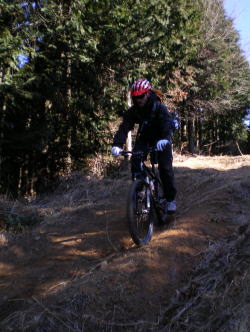Anyway, Taketoyo is on the Chita Peninsula, southwest of Nagoya. It allows for excellent cardio training on hills and trails, much less traffic, areas to ride my mountain bike, less pollution, great views and plenty of photo opportunities. I took my camera out Sunday afternoon and took some photos. Hopefully you’ll enjoy them!

Citrus Trees: VERY rarely do you see grass yards. Any cultivatable soil is used for fruits, veggies or rice. Fruit—oranges, kumquats, grapefruit—from these trees are being picked right now.

Training Trails: These trails are everywhere.

Most trails are nice though some I’m positive have not had a human on them for months. Stepping in holes hidden in the grass isn't fun. (I have ice on my knee as I type this.)

Farm Ground and Ocean

Shipping: Nagoya has the largest and busiest sea port in Japan, making this area an industrial foundation for the Japanese economy. Toyota Motors and Aichi Steel are headquartered here.

Fishing and Tourism: The waters off of the southern tip of the Chita Peninsula are supposedly excellent fishing for squid…or is it octopus? Either way, in a culture where fish is a daily staple, the fishing industry is very important and thriving here. There rough coastline also attracts many tourists. The average age is at least 60. Not sure what that’s all about.

Shinto Shrine: Shintoism is a religion “conceived” in Japan. It is most closely related to Buddhism, but is uniquely Japanese. Whenever you see a “torii,” think Shinto. (Photo courtesy of Wikipedia.org)

No comments:
Post a Comment